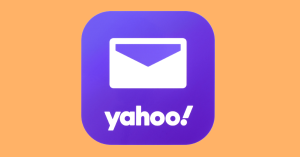Are your emails landing in the spam folder? You’re not alone. Email authentication issues impacting deliverability are a growing concern for email marketers, including many high-volume senders. This is a situation that demands your immediate attention. Inbox placement will only get more challenging for those who don’t comply.
But this isn’t all bad news. In fact, we believe it’s actually good news for email marketers for two reasons:
- It’s another sign of maturity in the market, demonstrating to consumers and marketers alike that email marketing can be trusted.
- It’s easily fixed.
So what’s happening?
Microsoft is Tightening Email Sender Requirements
Microsoft recently announced that it is stepping up its efforts to combat spam and phishing by rolling out stricter authentication requirements for bulk email senders targeting its Outlook.com domains (this also includes hotmail.com and live.com). Following in the footsteps of Gmail and Yahoo, these new measures are designed to ensure that only legitimate, verified emails reach recipients’ inboxes.
In this post, we’ll break down what these changes mean for email marketers, explain the key technical terms you need to know, and show you how emfluence can help you stay ahead of the curve and keep your email campaigns on track and in the inbox.
What’s Changing for High-Volume Email Senders?
As of May 5th, 2025, Microsoft will require stricter email authentication for domains sending more than 5,000 emails per day. Non-compliant emails will be sent directly to the spam folder, and if issues aren’t addressed, they could eventually be blocked entirely.
To maintain inbox placement and ensure your emails are received, senders must ensure compliance with the following technical requirements:
- SPF (Sender Policy Framework): Your domain’s DNS must contain a valid SPF record that designates authorized IP addresses to send emails on your behalf. Your email will fail the SPF check if it doesn’t meet these requirements.
- DKIM (DomainKeys Identified Mail): Your emails must include a valid DKIM signature to verify their authenticity and protect against tampering in transit.
- DMARC (Domain-based Message Authentication, Reporting & Conformance): Your domain should have a DMARC policy set, at a minimum, to p=none, and it should align with either SPF or DKIM (preferably both).
Sounds complicated, right? Let’s explain what these terms actually mean to the layperson and your email campaigns.
What is SPF (Sender Policy Framework)?
Think of SPF as a bouncer for your email domain. It tells receiving email servers which IP addresses are authorized to send emails on your behalf. If the IP address sending the email isn’t listed in your SPF record, your message could be flagged as suspicious, sent to spam, or even rejected outright.
What is DKIM (DomainKeys Identified Mail)?
DKIM is a digital signature proving an email truly came from your domain and hasn’t been altered during transit. When your email server sends a message, it adds a unique cryptographic signature to the header. The recipient’s server then uses a public key (published in your DNS records) to verify the signature and ensure the message hasn’t been tampered with.
What is DMARC (Domain-Based Message Authentication, Reporting & Conformance)?
DMARC lets you decide how email servers treat messages that fail SPF and/or DKIM checks. You can set it to “p=none” (monitoring only), “p=quarantine” (mark as spam), or “p=reject” (outright reject the message). DMARC also gives you reporting tools to monitor who is sending emails on your behalf and detect unauthorized activity.
Still not clear? Don’t worry, we can help. But before we do, it’s also important to highlight some additional advice from Microsoft.
Don’t Forget These Best Practices
Alongside the updates relating to authentication, Microsoft also recommends the following steps to enhance deliverability. As an email marketing professional, none of these best practices should come as a surprise. However, it does absolutely no harm to remind everyone of them now and again. You should treat the following bullet points with urgency:
- Compliant P2 (Primary) Sender Addresses: Make sure your “From” or “Reply-To” address is valid, accurately reflects your sending domain, and is able to receive replies. This ensures transparency and allows recipients to engage with you easily.
- Functional Unsubscribe Links: Always include a clear, easy-to-find unsubscribe link in your emails. This is crucial for compliance with anti-spam laws and ensures your recipients can opt out of future communications if they choose.
- List Hygiene & Bounce Management: Regularly clean your email list by removing invalid or inactive addresses. This helps minimize spam complaints, reduces bounce rates, and prevents wasted resources on undelivered messages.
- Transparent Mailing Practices: Use honest and accurate subject lines, avoid deceptive headers, and ensure recipients have opted in to receive your emails. Building trust with your audience is essential for maintaining a good sender reputation.
What Are the Risks of Non-Compliance?
From May 5th, 2025, Outlook will begin sending emails from high-volume, non-compliant domains to the spam folder. This gives senders only a short window of opportunity to resolve any authentication issues. If not addressed, these emails could be missed by your recipients, leading to a significant drop in your email engagement metrics.
Important: At a later date (TBA), Microsoft will begin rejecting non-compliant messages altogether to further protect users from spam and phishing. Regardless of the volume of emails you send, it’s something you should pay attention to.
Feeling Overwhelmed? emfluence Can Help
We understand that email authentication might seem a little overwhelming. As a marketer, you’ll want to focus on creating compelling email campaigns and not dealing with complex DNS records and authentication protocols. That’s where we come in.
At emfluence, we assist in the technical setup for SPF, DKIM, and DMARC, ensuring your sending domain is properly authenticated. We can work with your IT or DNS provider to configure your records, monitor compliance, and provide ongoing support as email standards evolve.
Whether you’re sending marketing emails, transactional messages, or both, we’ll ensure your campaigns stay compliant, protect your brand reputation, and maintain high deliverability. With emfluence managing your email infrastructure, you can focus on what matters: delivering great content to your audience.
Learn More
To learn more about email authentication and keeping your emails out of the spam folder, contact the email marketing experts at emfluence today at expert@emfluence.com.


